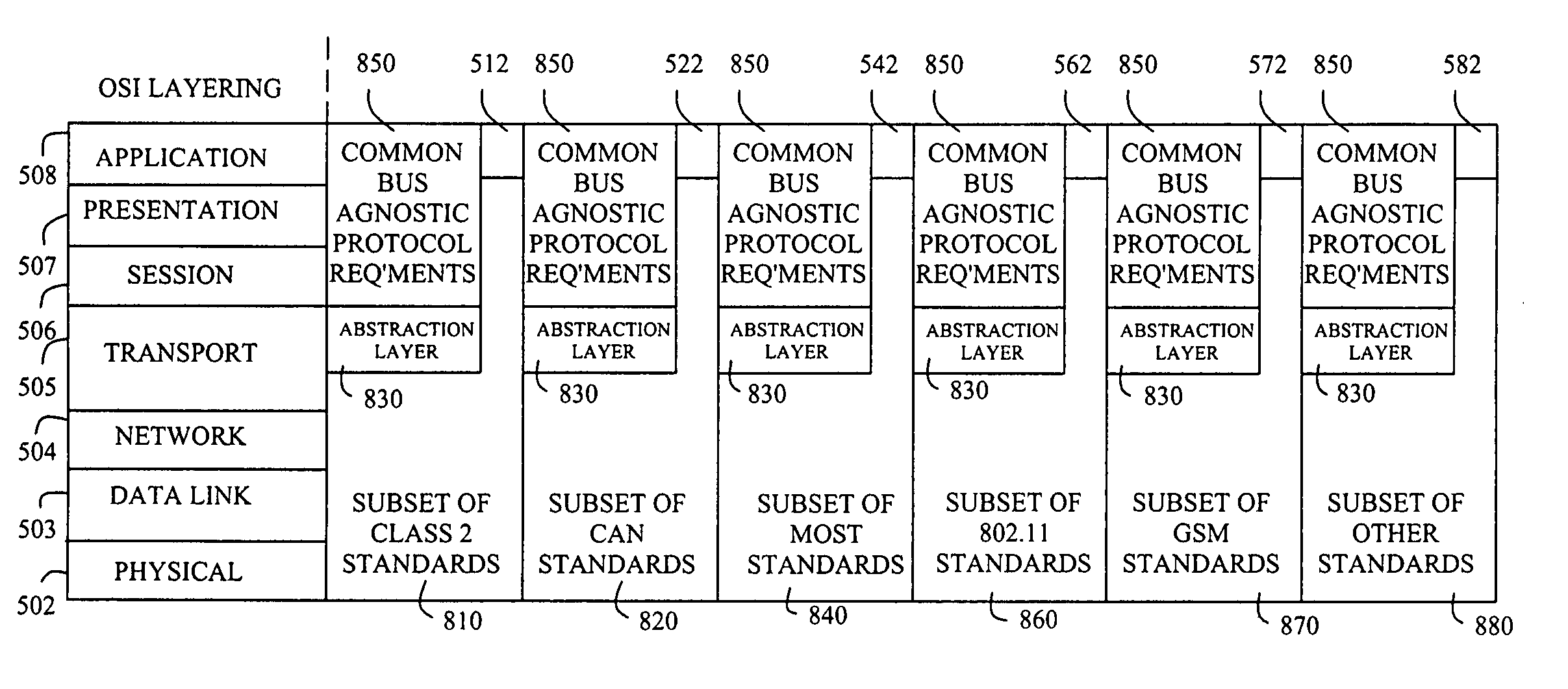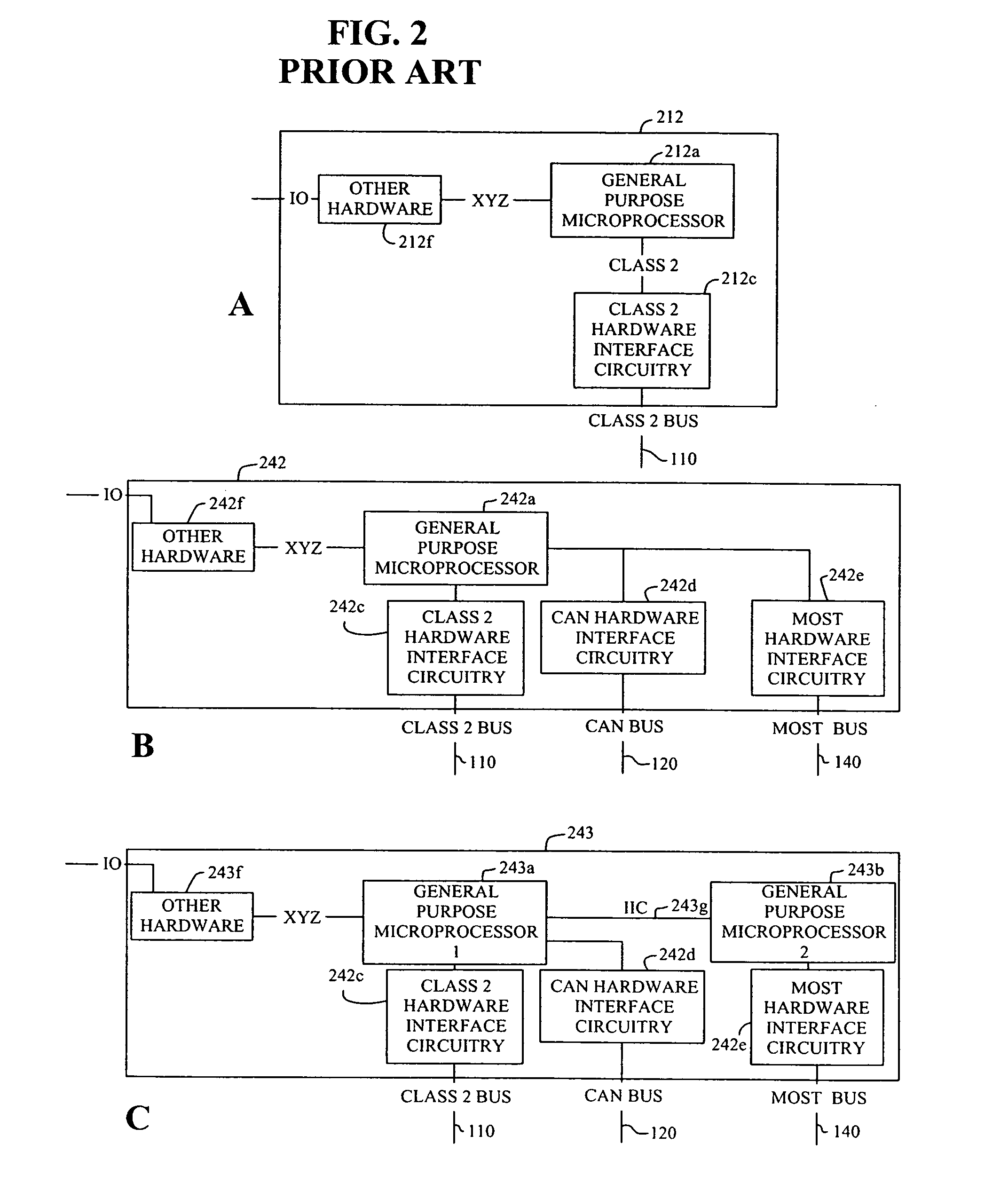Method and protocol for diagnostics of arbitrarily complex networks of devices
a network of arbitrarily complex devices and diagnostics technology, applied in the field of network communication, can solve the problems that the efficiency and optimization gained through the use of domain-specific communication bus designs tend to come at the expense of poor layering, and achieve documentation efficiency and variation reduction, the effect of removing the cos
- Summary
- Abstract
- Description
- Claims
- Application Information
AI Technical Summary
Benefits of technology
Problems solved by technology
Method used
Image
Examples
Embodiment Construction
[0076] The embodiments disclosed below are not intended to be exhaustive or limit the invention to the precise forms disclosed in the following detailed description. Rather, the embodiments are chosen and described so that others skilled in the art may utilize their teachings.
[0077] Automotive vehicles contain many electrical components such as circuits, motors, switches, sensors and other devices. Communication networks are provided in vehicles to enable communication among all of the vehicle's components. Communication networks in vehicles also help to provide efficient diagnostics and service functionality.
[0078] The use of the term “global” hereinafter refers to the applicability to all nodes coupled to any existing or not-yet existing vehicle communication bus.
[0079] The use of the term “layer” hereinafter refers to a software and / or a hardware environment in which a particular protocol operates to enable communication between two (2) or more devices, modules or nodes in a n...
PUM
 Login to View More
Login to View More Abstract
Description
Claims
Application Information
 Login to View More
Login to View More - R&D
- Intellectual Property
- Life Sciences
- Materials
- Tech Scout
- Unparalleled Data Quality
- Higher Quality Content
- 60% Fewer Hallucinations
Browse by: Latest US Patents, China's latest patents, Technical Efficacy Thesaurus, Application Domain, Technology Topic, Popular Technical Reports.
© 2025 PatSnap. All rights reserved.Legal|Privacy policy|Modern Slavery Act Transparency Statement|Sitemap|About US| Contact US: help@patsnap.com



